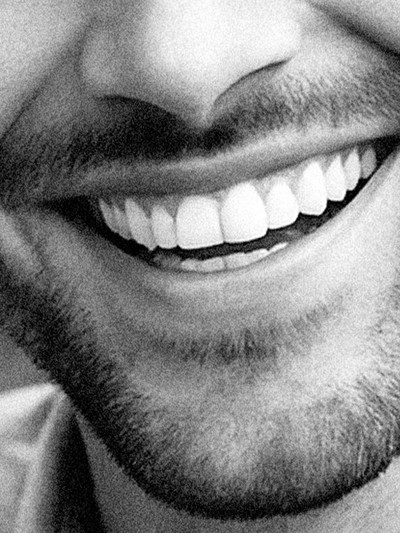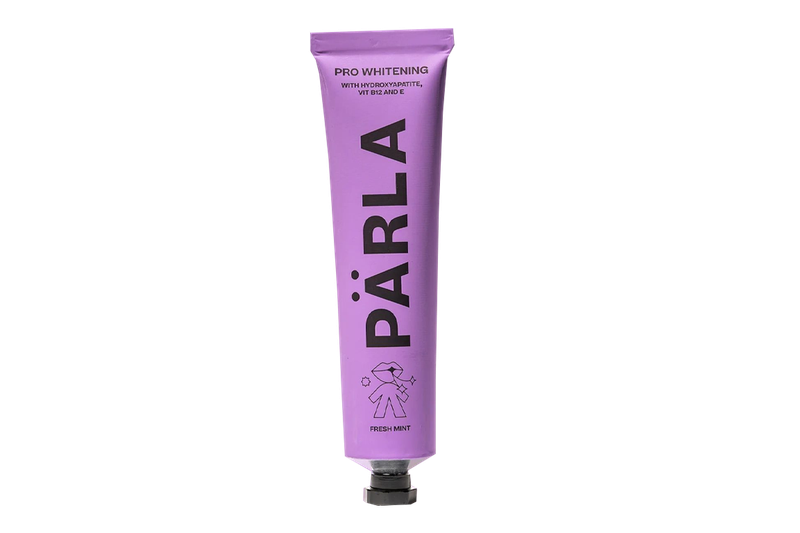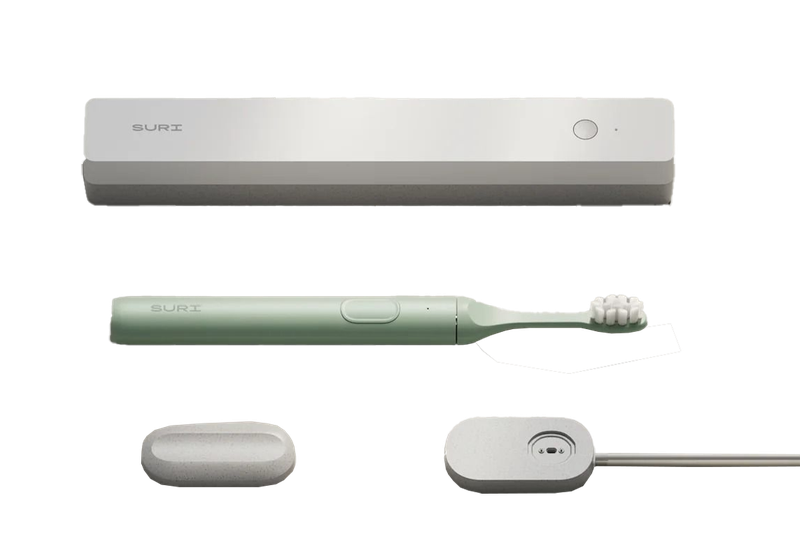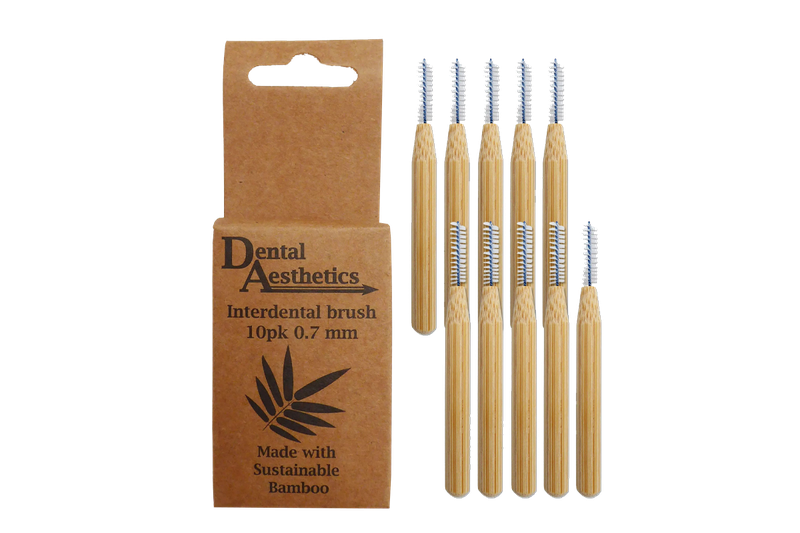

Everything To Know About Teeth Whitening Today
Can you start by explaining the difference between stain removal and teeth whitening?
Jerome: Food, drink and, most obviously, smoking create pigments that adhere to the surface of your teeth, causing stains. Stains happen more often on the places that are difficult to reach with brushing – between the teeth and just above the gum line. Unlike whitening (also known as bleaching), removing stains does not change the colour of your teeth, but it does help reveal your natural tooth colour, so it is an effective way to brighten your smile. Brushing your teeth and flossing regularly helps minimise staining. However, if the stains on the enamel cannot be removed, this is when you might want to think about whitening, either professionally or using an over-the-counter product.
What causes teeth yellowing?
Harry: Teeth yellowing can occur in two ways. Extrinsic staining is staining from food sources. The other thing that can contribute to teeth yellowing is if we have worn down our tooth enamel. Acidity does this. Too many fizzy drinks, too much wine, lemon water (which I know is a health craze at the moment) can all contribute to acid erosion, which will turn your teeth more yellow because the enamel is wearing away on the outside of them.
How does teeth whitening work?
Jerome: Whitening gels contain an active whitening ingredient that penetrates the enamel to get to the discoloured molecules. Oxygen molecules from the whitening agents react with the discoloured molecules in your teeth, breaking the bonds that hold them together. The oxygen molecules spread, whitening the entire tooth. As a result, you are left with a brighter and whiter smile.
Can you explain the different types of professional teeth whitening available?
Harry: Dentists use different brands, but the chemical is always hydrogen peroxide. You can have in-surgery whitening, also known as in-chair whitening, and that's where you have them whitened at the dentist. The appointment is normally about one hour, and it's an instant result. The more popular and longer-lasting way to whiten your teeth is at-home whitening. You come for an assessment, the dentist takes a 3D scan of your teeth, has whitening trays made, and then you collect the trays. You essentially use the trays and the gel every day or overnight for a series of two to three weeks. That is my favourite option because it lasts longer and it's more comfortable for the patient.
What can you expect in a whitening appointment?
Jerome: You will have a full oral examination, checking for possible cavities or gum problems that may need resolving before the whitening treatment. A full mouth hygiene check will also be completed to make sure all the stains and plaque are removed before the whitening process begins. Possible allergies and teeth sensitivity will be checked to ensure you’ll have no pain or problems while undergoing the whitening procedure.
How white should you go?
Jerome: Deciding the level of whitening will always be a personal choice, and the patient can always top up with home whitening trays and gels. In my opinion, it is always better to be a little more white as the effect of the whitening will fade after a few months.
Harry: At-home whitening gives the patient control as to how white they can go. If you're happy with the result after two weeks, you can just stop. But equally, if you want them to go whiter, you can just keep going a little bit more, do another week or another two weeks, and just see how white they go. In my experience, if a patient completes a full course of whitening (three weeks), they’re going to get a nice, bright, natural colour without looking fake.
What's the damage?
Harry: The cost of teeth whitening generally varies between £450 and £550, depending on the protocol that the dentist is going to prescribe, and how many tubes of whitening gel the patient is going to want. That’s a full course, which includes the assessment, the trays, the whitening gel, and a review.
Jerome: At The Dentist Gallery, the combined in-clinic and home whitening treatment is around £750. It includes a one-hour in-chair session using 16% carbamide peroxide, followed by ten days of home whitening with custom trays. The home-only option costs between £400 and £500, using the same 16% carbamide peroxide gel and custom trays. This approach typically requires around three weeks of daily use to achieve results similar to the combined protocol.
Is it uncomfortable?
Jerome: In-chair whitening should never hurt. We do four sessions of ten minutes in a row, leaving the gel on with the activating light. However, you can experience some sensitivity if you wear the trays at home for longer than 90 minutes. It’s not recommended to wear the trays overnight.
Harry: The key to a comfortable experience is having trays made that fit you properly, a dentist who takes an accurate 3D scan of your teeth, and also making sure that you follow the instructions given to you by the dentist.
Let's talk about over-the-counter products – are they any good?
Harry: I wouldn't recommend any over-the-counter teeth-whitening products. They are marketed towards making patients think that they're going to whiten their teeth, but really they're just removing stains.
Jerome: Over-the-counter products in the UK are legally restricted to 0.1% hydrogen peroxide, which is far too low to have a meaningful whitening effect. This concentration cannot reach the dentin layer where true colour change occurs. Because of this limitation, I don’t recommend over-the-counter whitening products. While they may remove light surface stains, they’re unlikely to produce noticeable results. In contrast, professional products using up to 6% hydrogen peroxide (or 16% carbamide peroxide) under the guidance of a dentist offer much safer and more effective whitening.
Are there any side effects to consider?
Jerome: The two side effects that occur most often are a temporary increase in tooth sensitivity and mild irritation of the soft tissues of the mouth, particularly the gums. Tooth sensitivity can occur during the early stages of a whitening treatment. Tissue irritation most commonly results from an ill-fitting mouthpiece tray rather than the tooth-bleaching agent. Both conditions are usually temporary, and disappear within one to three days of stopping or completing treatment.
If you do experience sensitivity, you can reduce or eliminate it by wearing the whitening tray for a shorter period of time (for example, two 30-minute sessions versus two 60-minute sessions). Another way to aid sensitivity is to stop whitening your teeth for two to three days to allow them to adjust to the whitening process. You can also ask your dentist or pharmacist for a high fluoride-containing product, which can help re-mineralise your teeth. Apply this to the tray and wear for four minutes prior to and following the whitening agent. Finally, eat more dairy products as the casein protein in milk is one of the best tools to fight sensitivity.
Why would people choose the professional route rather than the over-the-counter alternatives?
Harry: Legally, dentists are the only ones who are allowed to prescribe and sell a percentage of hydrogen peroxide which is high enough to whiten your teeth. Over the counter, even if they're claiming to be teeth whitening, all that an over-the-counter product is going to do is remove your stains.
Jerome: Professional treatments are customised to your mouth. We assess the health of your teeth and gums, provide precisely fitted trays, and supervise the process to ensure the gel stays where it should and doesn’t harm your gums or enamel. The results are faster, safer, and longer-lasting than anything you can get over the counter.
Is there a natural way to whiten your teeth?
Harry: The best natural way to whiten your teeth is to ensure you have a really good oral hygiene routine: an electric toothbrush, a whitening toothpaste, and incidental cleaning aids. Avoid certain foods in excess. If you were to consume something that's going to stain your teeth, the best thing to do is have a glass of water afterwards and just use that to clean your mouth out.
Jerome: Natural methods may help remove surface stains temporarily, but they don’t change the internal colour of the tooth. More importantly, many so-called natural whitening methods, like lemon juice, vinegar or charcoal, can be abrasive or acidic, leading to enamel erosion and long-term damage. These methods often make teeth appear darker over time, not whiter.
Has there been any innovation in the teeth whitening space recently?
Harry: Firstly, there’s the whitening gel that is being produced now with desensitising agents, as well as the whitening chemical, which makes it much more comfortable and brings less sensitivity. A lot of dentists are using digital scanners to take your impressions now, so you don't have to do the old-fashioned big mouth of putty. It's a camera that scans your mouth, which takes about 30 seconds. It's comfortable, and it's much more accurate than the old kind of conventional way of having an impression of your teeth.
Harry’s Stainless Edit
Pro Whitening Toothpaste
£10.95 | Pärla Pro
I recommend a good tooth whitening toothpaste. Pärla Pro Whitening has developed one with a plastic-free initiative. It's a small startup company and it has growing momentum – and it's designed by dentists.
Available at ParlaOralCare.com
Sustainable Electric Toothbrush
£67.50 (was £75), Suri
Suri’s electric toothbrushes are completely plastic-free, and USB-C charging. They’re good for travelling, very compact, and quite affordable versus other electric toothbrushes on the market.
Available at TrySuri.com
Bamboo Interdental Brushes, £3.99
Dental Aesthetics
Bamboo interdental brushes will help kind of get rid of the stains. They're made with sustainable bamboo, fully recyclable, and you can buy them on Amazon.
Available at Dental-Aesthetics.co.uk
For more information, visit TheDentistGallery.com & follow @DrHarryDavis
DISCLAIMER: We endeavour to always credit the correct original source of every image we use. If you think a credit may be incorrect, please contact us at [email protected].




